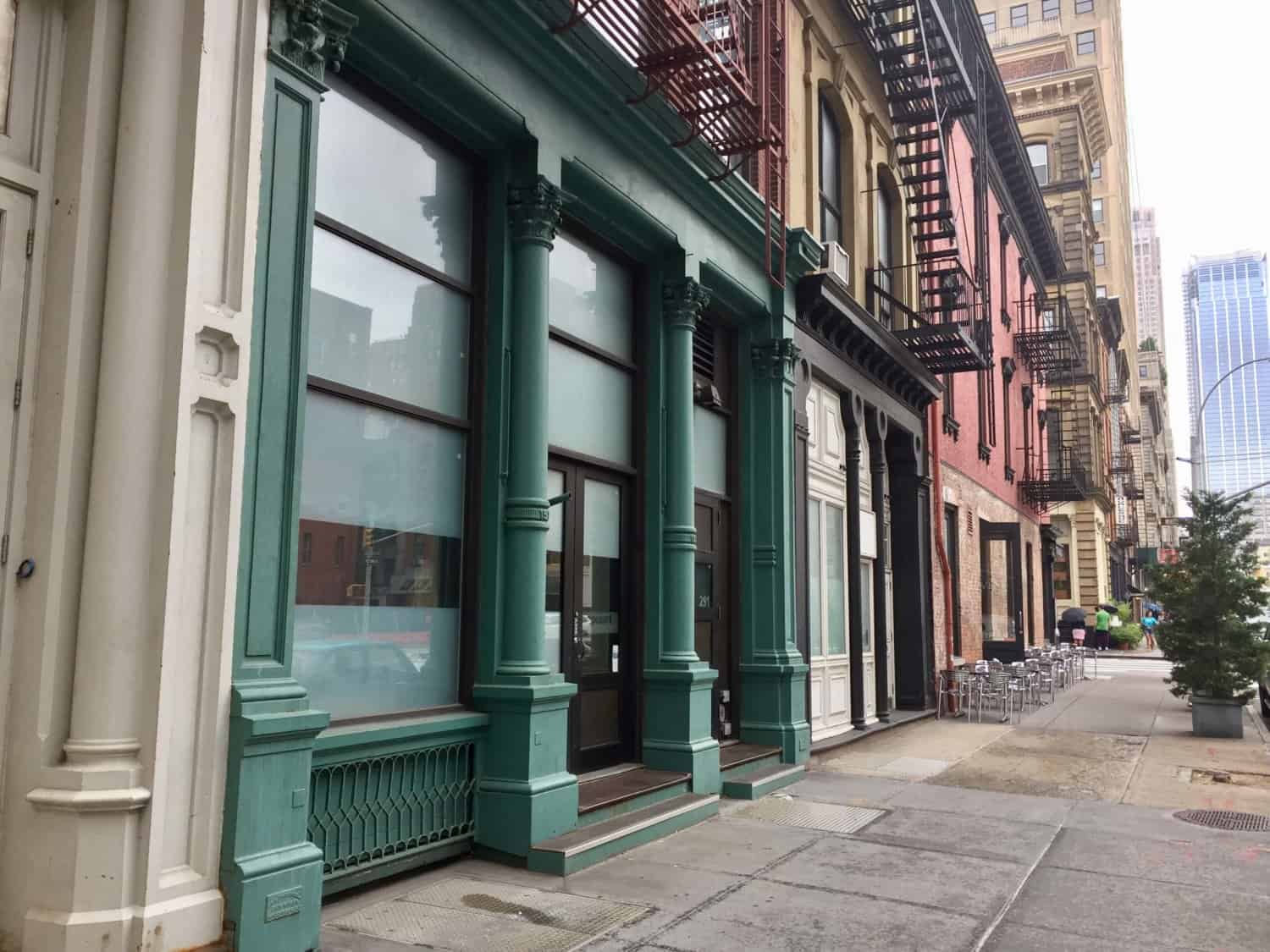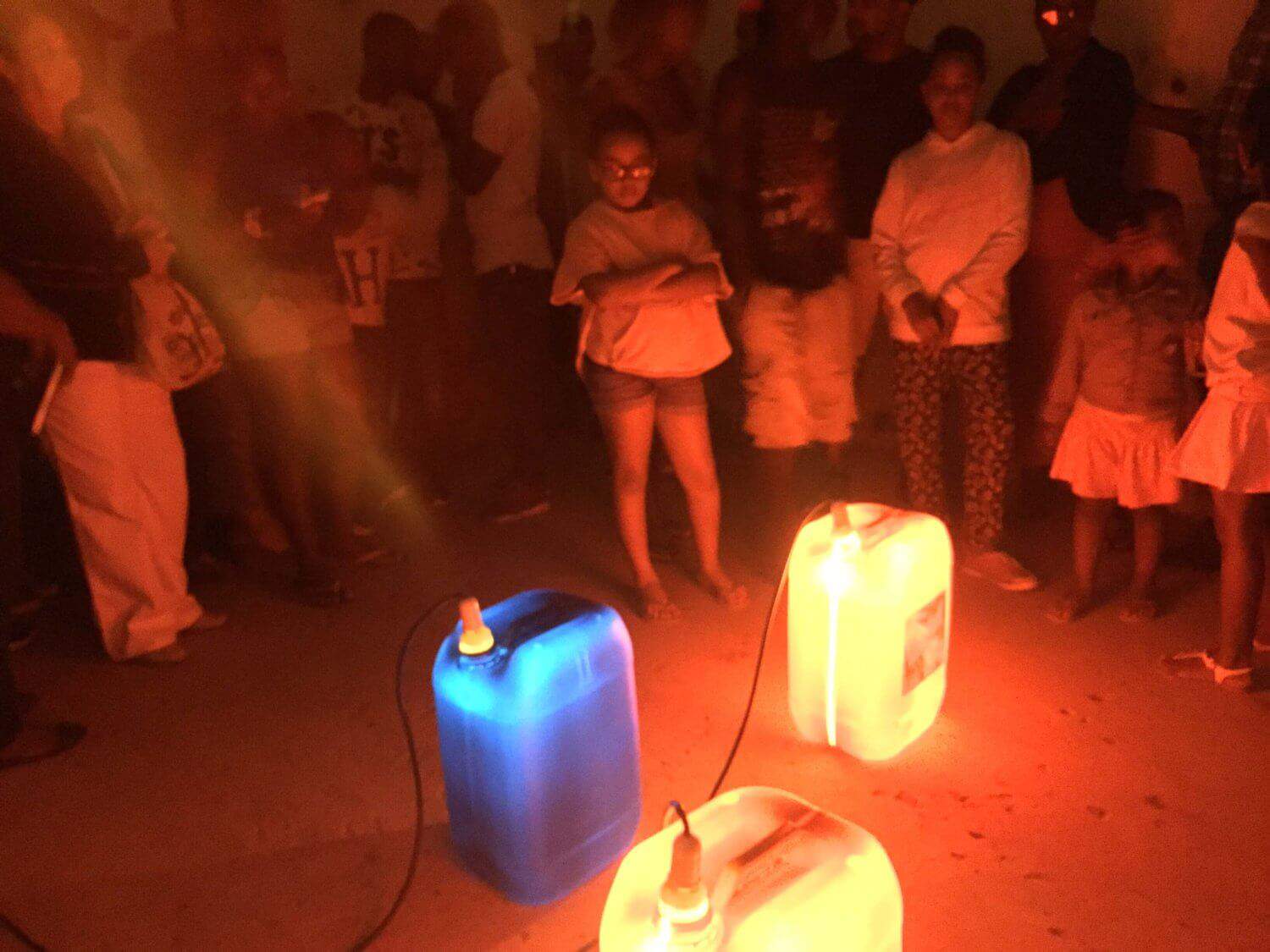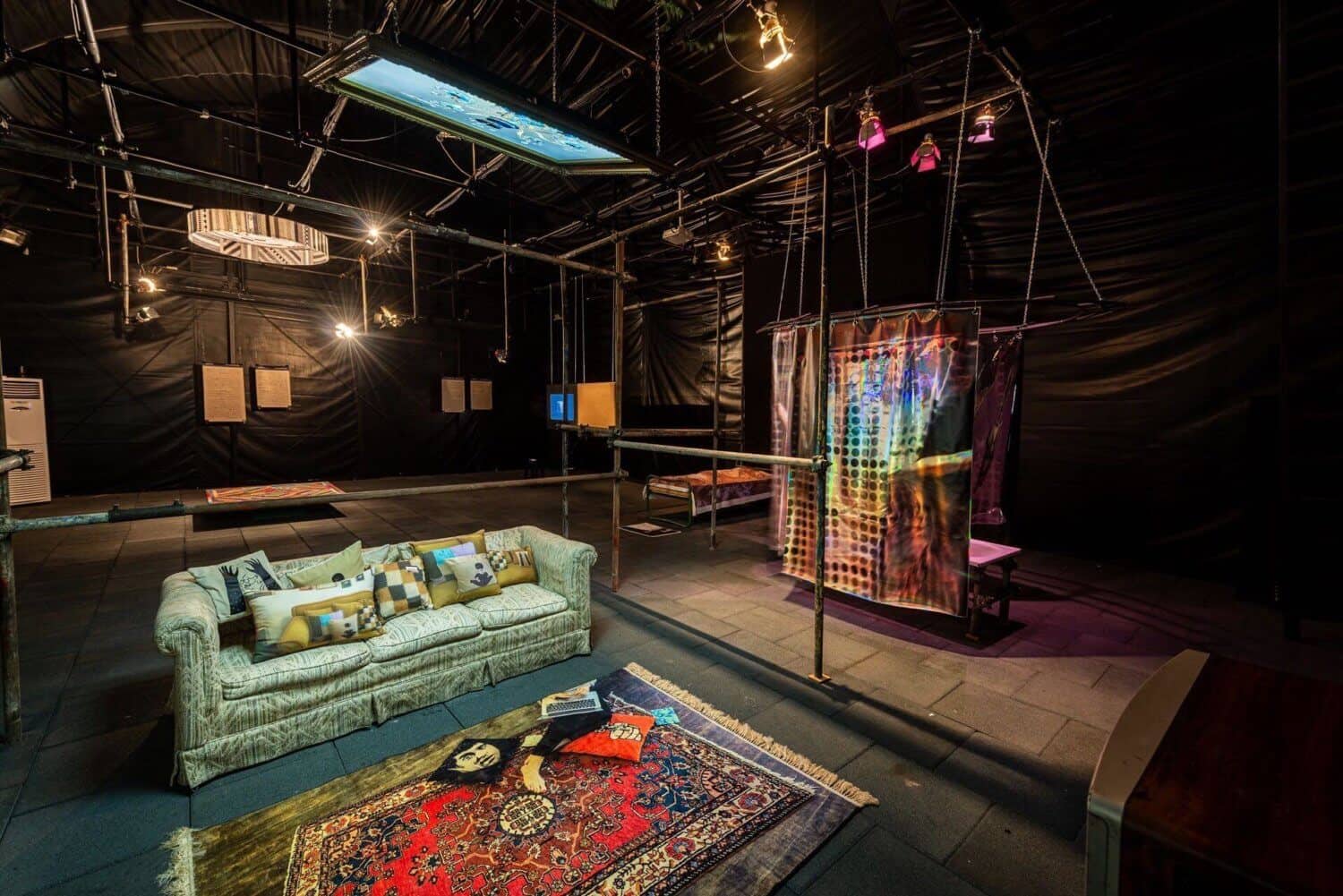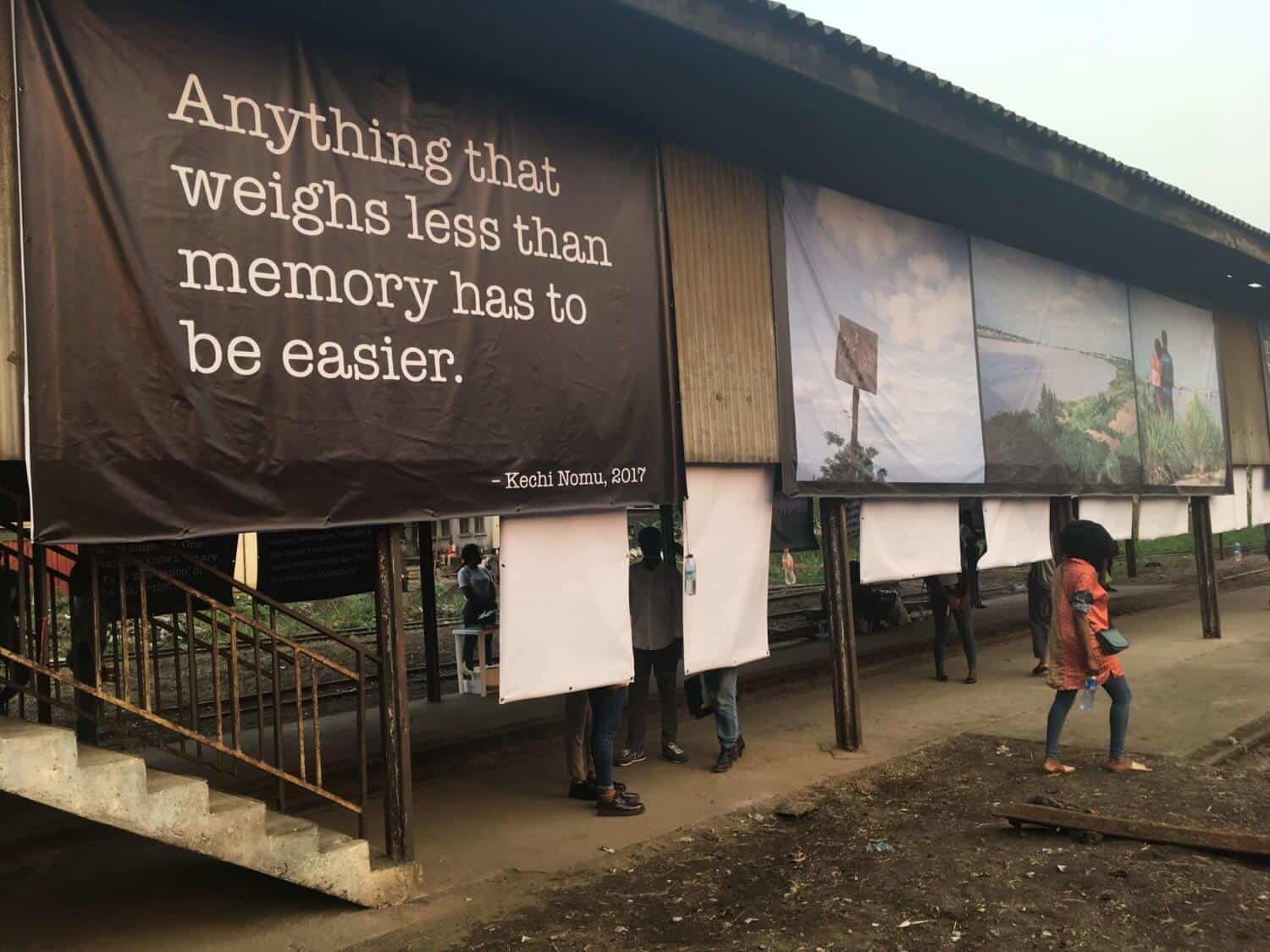apexart is a non-profit arts organisation in Lower Manhattan founded in 1994. They offer opportunities to curators and emerging and established artists while challenging set ideas about culture, art, exhibitions, and curation through their exhibitions, Fellowships, publications, and public programmes. Brendon Bell-Robers, Co-founder of ART AFRICA spoke to Steven Rand, Executive Director and Founder of apexart, to learn more about this innovative organisation.
When I started apexart, I had no aspirations about size, reputation, or anything like that. I was just frustrated with the commercial art world and the fact that I couldn’t find any depth of thinking in the commercial art world where I was operating. It was 1994. And I felt that if it made sense to me, it would make sense to other people, that people would get on board because they had similar sensibilities, and like me, they also wanted an alternative to the status quo.
“What apexart does is the art world; I believe what the art world does is not!” – Steven Rand

apexart, New York, USA. All images courtesy of apexart.
apexart is about collaboration, which satisfies a particular social need to evaluate, connect, share and work together. As this social need has increased, we have noticed that personal introspection has decreased. There seems to be heightened anxiety around externalised thinking, with people increasingly worried about what other people are thinking about them.
Early on in apexart’s history, we attracted a lot of attention because we were young and new. Many artists get opportunities because they’re young and fresh. However, this did not serve apexart or our programme well, so we quickly steered away from the quid pro quo art world with its politics and promotion. We were about democratising from the top down, not about exercising power. Initially, we created our exhibition seasons based on blind selection – meaning that we convened an extensive unconnected jury of audience members who reviewed ideas for an exhibition proposal without any images or other qualifying information like CVs. We also established our other primary program, the apexart Fellowship, to recharge creativity and curiosity in artists rather than promote them.
The apexart Fellowship is about taking a month away from your usual routine, being challenged with a new way of thinking about things in a new environment.
Giving an artist an opportunity is not only about giving them an exhibition. Sometimes it’s about giving time and the opportunity to reassess. The apexart Fellowship is about taking a month away from your usual routine, in a new environment, and being challenged with a new way of thinking about things – it’s like you are going back to school. apexart acts as the faculty, creating a program structure where artists must do 3-4 pre-selected activities each day, especially those they would typically not do. The result opens up a whole new world for people.

Installation view of ‘A Glimmer of Freedom’, an apexart International Open Call exhibition in Tarrafal, Cape Verde in April 2017.
I find the traditional residency model demeaning, and there’s little purpose in it. It’s often not even fun. The apexart Fellowship programme is a lot of fun because there is a real connection and a real challenge. Putting an artist into a studio to create work they were making before – where is the challenge in that? What are they learning that they wouldn’t have learned anyway at home? Our program intentionally removes the usual comforts of home, such as familiar materials and studio, social and professional lives, and send them on activities they might not choose to do: creating a situation that is inherently not comfortable or familiar for them. It behoves us not to make more artists but to help artists make better and more connected art – and sometimes that comes with taking a creative break, to learn, reflect, and explore.
Who is the fellowship aimed at?
The Fellowship is most valuable for artists who have had that initial rise in their career. In their thirties, many artists end up rethinking what they are doing and why they are doing it – they are reviewing their place, and work and his is what our programme is about. It allows them to reassess what they are doing and why they are doing it. Conventional “opportunities” of the art world do not encourage this. Dealers want artists to create and maintain signature styles.

Installation view of ‘WOMEN C(A)REATE’, an apexart International Open Call Exhibition in Tehran, Iran in February 2020.
Artists often get trapped into the production of their signature style because survival in the art world is frequently about commodification, sales, self-promotion and branding – when being an artist is really about being creative.
The artworld is a place of social activity and commodification and is quite conservative. Most artists don’t do anything outside of the art world. They go to openings, talks but generally are not very adventurous and don’t challenge themselves enough.
Artists often get trapped into the production of their signature style because survival in the art world is frequently about commodification, sales, self-promotion and branding when being an artist is really about being creative. From the start of their careers, artists mediate this compromise, and free-flowing creativity and disparate connections that we call art are at risk of being lost.
The apexart Fellowship programme is about doing those things you did as a kid – being adventurous. Where you didn’t overthink things and consider whether they are cool, you just did it.
Most artists don’t do anything outside of the art world. They go to openings, talks but generally are not very adventurous and don’t challenge themselves enough.
Fellows are “obligated” to go to 70 pre-selected activities in a month. We also “obligate” people to agree not to make art during the programme’s month and not to be “the artist” but rather be “a participant.”

Installation view of ‘Re-Imaging Futures’, an apexart International Open Call exhibition in Lagos, Nigeria, in February 2019.
So, many things that people do in the programme might seem like sensitivity training in a way – but actually, the idea is to put people into situations that they would not usually gravitate towards and show that preconceived notions do not always serve them well.
A Fellow’s initial expectation may be that they will not enjoy a particular activity participating in an improv comedy workshop, for example – but find that they enjoy it, and the anxiety and excitement make them want to do it again. After this, fellows realise that their preconceived thinking is not open-minded, so that these activities can become quite a significant experience. It’s about getting back into life and away from that observational and non-participatory mode.
The idea is to put people into situations that they would not usually gravitate towards and show that preconceived notions do not always serve them well.
We don’t want to be a name on someone’s resume. We want to provide a life-changing experience – all you have to do is read the artist’s journals to see the impact. The program requires that each artist must keep a public journal of reflections during the program. Besides this, we also send a one-month, six- month and twelve-month questionnaire to determine what effect the Fellowship had on them.
To be part of our fellowship programme, we might reach out to you and recommend someone you think is suitable for our program. We tell artists that they don’t get to make art, they don’t get a show, but we do pay for their flights and supply an apartment for their stay, and pay for the activities – the artist’s obligation is not to promote themselves, but to explore, learn, and question.
This programme is such a rejuvenating experience for people, and quite often, artists re-evaluate their practice and make significant changes.
Tell us about the OPEN CALL, the submission process and your extensive global jury.
A 500-word proposal – no images – no resume – no catalogues – ONLY THE IDEA!
After 25 years, there isn’t a day that we don’t get requests from people who want to become a juror, from PhD’s to artists to people just curious about what we do. We often get asked: how do you get jurors? – because we can’t get jurors. And I explain that we have created a win-win situation where our jurors don’t feel like we are not taking advantage of them. They feel like they’re getting something out of it and helping to determine our schedule.
How do you administer and coordinate this process?
We write our computer code, and everything is processed for us automatically. It’s so easy. It’s like a breeze, and the winners pop out at the end.
We do two Open Calls each season, with over 800 individuals worldwide, each review a random subset of 50 proposals from the hundreds submitted. Our process hides the submitter’s name from the jurors, ensures that each submission receives an equal number of votes and changes the order each time a juror logs in. Each proposal is typically juried by more than 35 individuals, with more than 18,000 votes in total this last round. Apexart does not affect the voting in any way and publishes a complete list, by number only, for submitters to see where their proposal ranked.
Everyone is online worldwide, and if you submit from South Africa, we have other South Africans looking at your proposal who understand the context. It’s not just 5 New York people sitting around a table judging unfamiliar ideas. Jurors are so varied and numerous that the process can include these different sensibilities.
The art world can be such a closed space where residencies and awards are used strategically and not to give deserving artists an equal opportunity.
I can’t admit to saying this, but New York people often think everybody else’s work is unsophisticated – mainly because they’re not familiar with it. And this can be a real problem. I’ve seen the traditional jury process degrade to such a point where it disintegrates.
The art world can be such a closed space where residencies and awards are used strategically and often don’t give deserving artists an equal opportunity.
The exhibition programme is less hierarchical about the winners. We get around 1,000 proposals between the two open calls each year. That means we have many people thinking hard about an idea that they want to turn into an exhibition. It is not the “traditional approach” of meeting the director of a gallery or museum and trying to impress them, wait for an opportunity, and be persistent. Our Open Call creates a level playing field. 4 Exhibitions are selected for our NYC space with an international mirror opportunity allowing submitters to propose any location in the world other than NYC. We are introducing our exhibitions to 4 areas that would usually be overlooked in the global art world.
It is not the traditional approach of meeting the director of a gallery or museum and trying to impress them, wait for an opportunity, and be persistent. Our Open Call creates a level playing field.
The benefit to our exhibitions of setting up in diverse locations and encouraging people not to set up in a museum or art space is tremendous. When we did the exhibition, ‘Just do it! Creative strategies of survival’ for local small scale businesses in Johannesburg, South Africa, we examined the challenges they face within the global economy. Over one month, five emerging South African Artists engaged with Spaza Shops in Alexandra to learn more about this small scale entrepreneurship unique to the township, Johannesburg and the country itself. Investigating daily activities, marketing strategies, social interaction, and alternative business models, the artists collaborated with shop owners, customers, and the greater community developed creative outcomes for the show. It was a genuine and authentic experience. That’s why these locations are so crucial to our programming.
Then we have 800 plus jurors reading and evaluating each of these ideas and thinking about them, which means each year, we have almost 2,000 people spending a lot of time either writing a proposal or reading a submission.
We try to make people think. That’s much more fun and is more important to me than a “prize” of winning. Because as an organisation, if you can make people engage, participate, take part in what you’re trying to do, feel a commitment to the outcome, that’s the most significant sign that you’re effectively fulfilling a vital need. It is an exciting thing. We’re trying to do stuff that makes sense to us and not stuff that follows what other people are doing.
apexart doesn’t decide who their fellows are, either. It’s a process by which we invite people to nominate someone they believe will benefit from the opportunity – so we don’t have anything to trade or give away, no influence, because we all hate that. It’s not about five people sitting around a table in New York City controlling the process. If we made the decisions, you’d be seeing the same exhibitions every time, the same kinds of artists provided opportunities every time.
After nearly 30 years what has apexart come to meant to you?
apexart, for me, is an autobiography in terms of sensibilities. While there are millions of people dealing with art, we only need to reach a couple of thousand, and there are now many thousands following apexart, so for me, it was less about trying to give people what they wanted. The most important thing for anyone is to be honest with yourself in what you are doing – we don’t want to be in service to somebody – that’s not interesting to me.
We had no model for our programmes at the beginning. It just made sense to us. If you promote artists and allow them to show their work and give them a blurb, well, that’s what everybody does, and it’s essential. But it’s not that interesting to us. Everybody is promoting. There is this cacophonous amount of promotion in the art world, and people want something else.
We don’t walk the middle ground. You need to mix it up. People, especially in the art world, want to see the dust kicked up in a non-threatening kind of way.
We support creativity. I love creativity, whether it’s writing, architecture, or medicine. I don’t make those distinctions. We are in such a creative world. When I see boring art, I have to go elsewhere.
Generally, we only have one or two fellows a month, one in New York and one in another location. That’s how much attention we pay to each fellow. We’re not about trying to reach as many people as possible, and the growth of apexart, which is still pretty small, by the way, is because people are interested in what we do. That’s enough for us.
Do you promote apexart?
I honestly feel that we are doing good at apexart, and while I don’t especially believe in promotion – I did at one stage approach a PR and Media company to assist us at apexart.
I called somebody who did work for all of the prominent museums, and after I told her what we did and the way we do things, she said, “I don’t think I can help you: you don’t work with famous people, the fellows aren’t doing exhibitions. You’re just not helping yourself.”
We don’t walk the middle ground. You need to mix it up. People, especially in the art world, want to see the dust kicked up in a non-threatening kind of way. You see that whenever somebody does something new in the art world, it gets people’s attention and consideration. Sometimes that’s how you get noticed. We try to walk that road.



